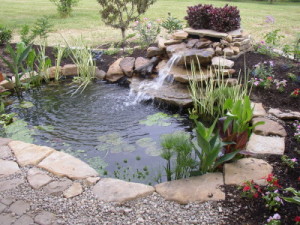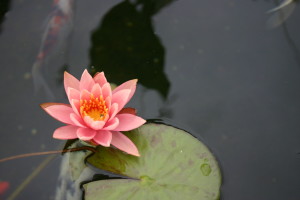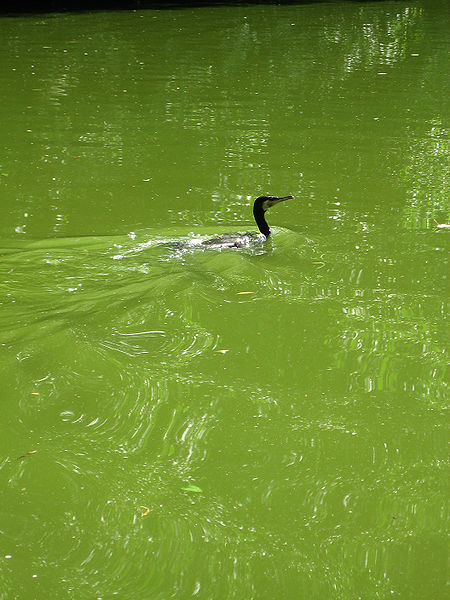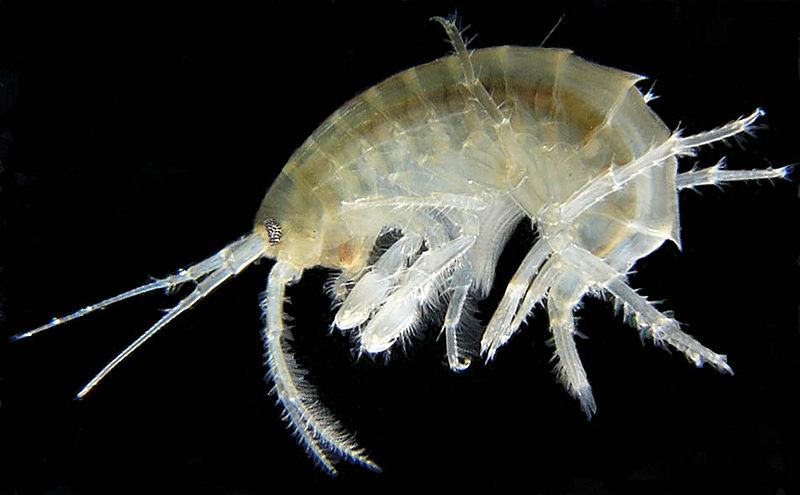Spring Pond Care
 Spring is finally here in the northeast, and it is time to give your pond some attention after a long cold winter. Here is a quick to-do list to help you make sure that your pond is in good shape, and will give you a summer of trouble free enjoyment.
Spring is finally here in the northeast, and it is time to give your pond some attention after a long cold winter. Here is a quick to-do list to help you make sure that your pond is in good shape, and will give you a summer of trouble free enjoyment.
Inspect Your Pond
Freezing, thawing, heavy snow (and pets and kids) can cause rocks and landscape to shift. Check the perimeter of your pond for any changes to your pond boundary, looking for any potential hazards or areas that may have weakened that could cause a leak. This is especially important if your pond has a stream or waterfall.
Prepare Your Equipment
Whether you bring your equipment inside, or leave it outdoors, make sure that you look over all your plumbing and filter equipment. Check for cracks or other damage, worn parts, pull everything apart and make sure that nothing is hiding inside your pumps or filters that could cause a problem on start-up, replace Filter Media as necessary. Inspect your nets and maintenance equipment, so that everything is ready when you need it.
If your pond includes an Ultraviolet Sterilizer or Clarifier, check the quarts sleeve, make sure it is in good shape and clean. Make sure that all the seals are in good shape, so there are no leaks. Replace your U.V. Sterilizer Bulb. Even if your U.V. is still functional, it may not be producing quality good light. Bulbs degrade over time, light spectrums shift, and efficiency is reduced. Replacing your U.V. bulb every spring will ensure that it is working at peak performance when the hot weather comes, and your need it most.
Clean Out The Mess
Evaluate how much cleaning really needs to be done, Don’t overdo it! Especially if you have fish, you don’t want to do too much, it will completely disrupt the biological system in your pond. In most cases netting out as much debris as possible, cleaning out the filters and stirring up and pumping out some of the dirty water is all that is needed. If there is a considerable amount of debris, and the water is dark and organic laden, more extreme cleaning may be warranted. In these cases it is advisable to use a kiddie pool, or some other safe container to temporarily house your fish during cleaning. Pump water from your pond into the pool, and then transfer the fish once the water level is low enough to easily catch them. Drain the pond as much as needed (completely drain id needed), and use a hose to wash the pond from the top down, pumping the dirty waste out with a submersible pump and large diameter Flexible Tubing.
 This is a good time to do some maintenance on your pond plants if you have any. Trim off any remaining dead or damaged foliage, evaluate whether you need to split or move anything to a larger pot, it is much easier to do this now with a lower water level. Using a 5 gallon bucket will make it much easier to gather plant debris or potting material.
This is a good time to do some maintenance on your pond plants if you have any. Trim off any remaining dead or damaged foliage, evaluate whether you need to split or move anything to a larger pot, it is much easier to do this now with a lower water level. Using a 5 gallon bucket will make it much easier to gather plant debris or potting material.
Refill the pond and use a conditioner if you are using a chlorinated water source. Make sure that you slowly acclimate your fish back into your pond if you did a very large or complete water change. Do this by adding some of the new pond water to the pool that has your fish, and putting some of the water from the pool back into the pond. Do this slowly over a period of time until the pool water has been completely mixed with the new pond water, do this slowly, especially if there is a big temperature difference. Once acclimated, put your fish back into pond.
Spring Pond Treatments
There are a few things that you can do for your pond during your spring start-up to ensure that your ponds biological system gets a good start. Use of biological supplements like Microbe Lift Sludge Away, will help to break down organic waste and muck that has accumulated in your pond over the winter, and get your pond headed in the right direction. Using a live nitrifying bacteria like Microbe-Lift PL will help re-establish your biological filter, this is especially beneficial if you have completely shut down your pond for the winter and stored your filter indoors.
This is also a good time to start Barley Straw Treatments for algae control, these take time to establish, so adding them now will make sure they are active for warmer weather.
Spring Fish Care
You need to be careful with your fish as they become active in the spring. Your fishes metabolism is controlled by the water temperature, and you should not feed your fish until water temperatures have stabilized above 40 degrees, your fish will have trouble digesting food in cold temperatures. Use a Spring and Fall Formula fish food that is easily digested until your ponds temperatures have stabilized above 60 degrees.
Hopefully this will get your pond headed in the right direction, and all you have to do this summer is sit back and enjoy!
Until next blog.
Dave
 That Fish Blog – Aquarium Advice and Information
That Fish Blog – Aquarium Advice and Information


